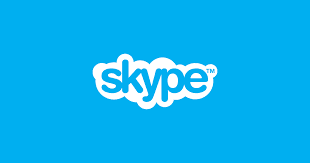WEEK 3: From Usenet to Twitter: The (Not So) New Media
History of Skype
People used to call each other on their cell phones before Skype. Skype was like a telephone, but you plugged it into your laptop and you could “call” other people that had the same software.
Skype was established by Estonians Zahti Heinla, Priit Kasesalu, and Jaan Tallinn, as well as Danish developer Janus Friis and Swedish developer Niklas Zennstrom. Skype's basic function is to convert voice signals into data, which is subsequently transmitted via the Internet and restored on a receiving computer. As a result, it was nicknamed "VoIP," which stands for "Voice over IP." Actually, Skype is not the application's first name. Initially, the creators chose the name "Skyper," which stands for "Sky peer-to-peer." When it was determined that "Skyper" was not usable with all Internet domains, it was subsequently abbreviated to Skype.
The original Skype logo was purple. Skype 0.9 Beta was the initial version. Following the initial 0.90 Beta, Skype released a number of further releases (0.97, 1.0 and 1.4 Beta). In 2005, the Beta version of Version 2.0 was released. Unlike classic telephones, Skype version 2.0 Beta adds video in 2005 - that is where the fun begins.
Skype reached new levels of popularity in 2005. The world was amazed when eBay purchased Skype entirely for around $2.6 billion. Not bad for a firm that has virtually tiny revenue. During the eBay ownership, Skype continued to make incremental advances. After a year, Skype increased the number of participants in a voice and video call to 100. This communication also created chat rooms and then Skype also nicknamed Skypecast. After a couple of years, in May of 2011, Microsoft came knocking, paying $8.5 billion for Skype and its reportedly massive user base.





Comments
Post a Comment